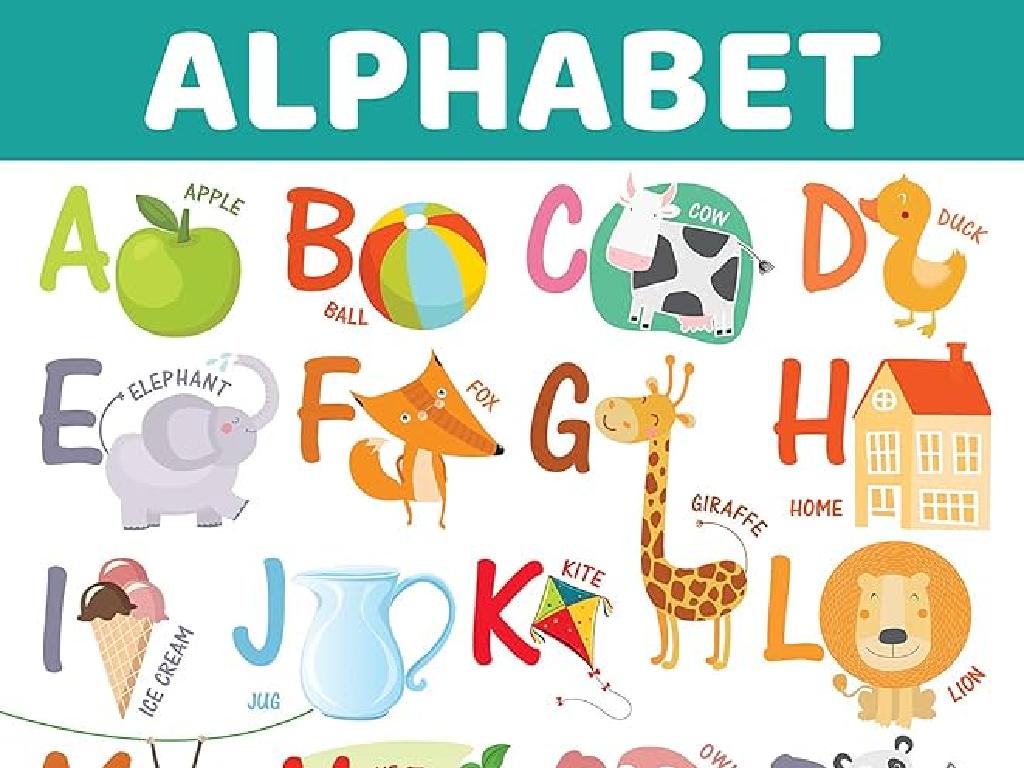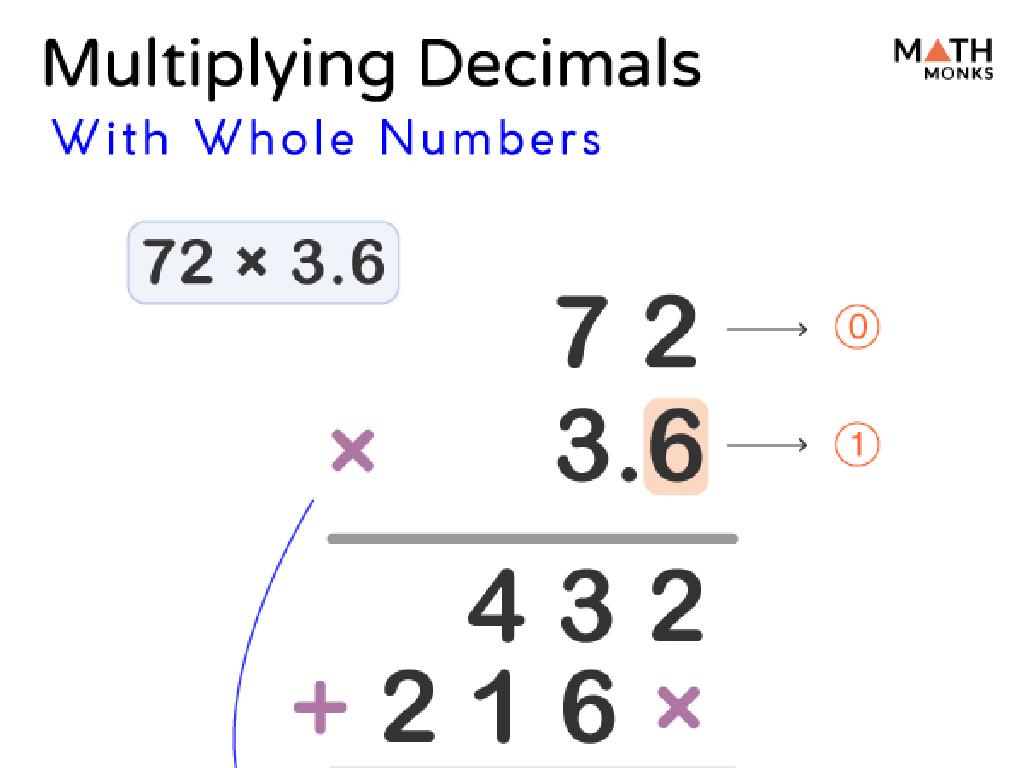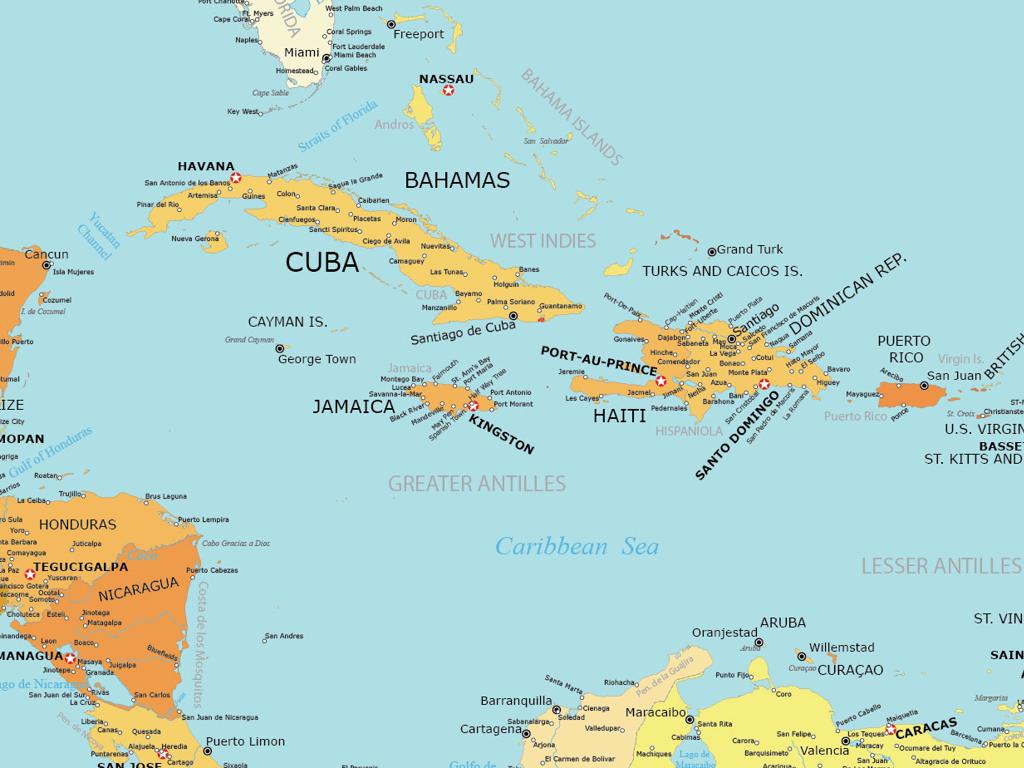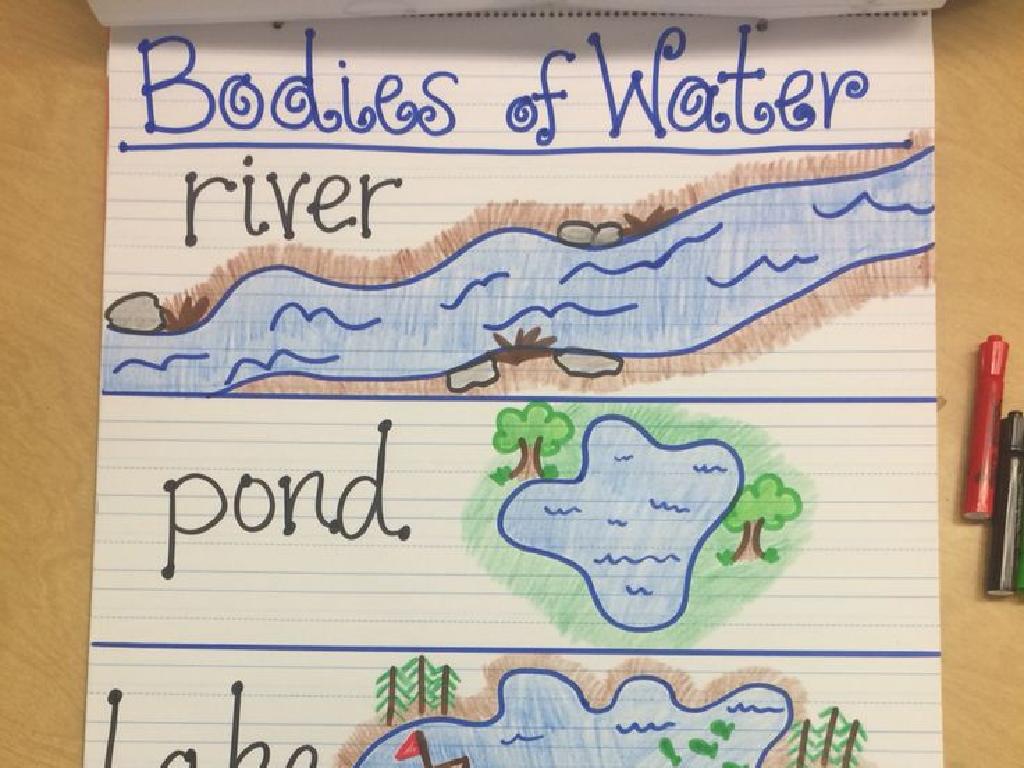What Will Happen Next?
Subject: Language arts
Grade: First grade
Topic: Inference And Analysis
Please LOG IN to download the presentation. Access is available to registered users only.
View More Content
Becoming a Detective in Reading
– What is inference?
– Inference is like being a detective, but for words!
– Be a reading detective
– Imagine you have a magnifying glass to look for hints in the story.
– Use clues to guess next events
– Clues can be words or pictures that tell us more about the story.
– Practice with a story example
– We’ll read a story together and try to guess what happens next.
|
This slide introduces the concept of inference as a fundamental reading comprehension skill. Explain to the students that making inferences is like being a detective, where they use clues from the text to figure out what the author is trying to say without directly saying it. Encourage them to look for hints or clues in the words and pictures that can help them guess what will happen next in a story. Use a simple story as an example and practice this skill together. Ask questions like ‘Why do you think the character is smiling?’ to guide them in making inferences. This activity will help students become more engaged readers and improve their ability to understand and enjoy stories.
Understanding Clues in Stories
– Clues help solve story mysteries
– Find clues to make inferences
– Think like a detective while reading
– Words and pictures are clues
– Look at the words and images carefully
– Use what you know as clues
– Your own knowledge helps guess what happens next
|
This slide introduces the concept of using clues within a story to make inferences about what might happen next. It’s important to explain to first graders that clues are pieces of information that give us hints to solve mysteries, just like detectives. Encourage them to look for different types of clues such as words the author chooses, pictures that go along with the text, and to use their own experiences and knowledge. Provide examples of simple stories and ask students to identify clues and predict outcomes. This will help them understand how to infer and improve their comprehension skills.
Making Predictions in Stories
– What is a prediction?
– A prediction is a guess about what might happen next.
– Using clues to predict
– Look for hints in the story to guess what comes next.
– Practice with a familiar story
– Let’s guess what happens next in ‘The Three Little Pigs’.
– Share your predictions!
|
This slide introduces the concept of making predictions, which is a fundamental skill in reading comprehension. It’s important to explain to first graders that a prediction is like a detective’s guess about what will happen next in a story, based on clues from what they’ve already read. Use a well-known story, such as ‘The Three Little Pigs’, to practice making predictions. Ask the students to think about what the pigs might do next after building their houses. Encourage them to use their imaginations and any hints from the story so far to make their guesses. This activity will help them understand how to use context and details to anticipate future events in a narrative.
Predicting the Story: What Happens Next?
– Read a story as a class
– Pause and predict next events
– Think about what you think will happen and why
– Discuss clues for predictions
– What words or pictures helped you guess?
– Understand story inference
|
This slide is for a class activity focused on developing inference skills in first graders. Start by reading a short, age-appropriate story to the class. At a suspenseful moment, pause and ask the students what they think will happen next in the story. Encourage them to explain their predictions by discussing the clues from the text or illustrations that led them to their ideas. This activity helps students practice using inference to analyze stories, an essential reading comprehension skill. For the teacher: Prepare a list of guiding questions to help students think about the story elements, such as ‘Why do you think the character did that?’ or ‘What do you see in the pictures that might tell us what comes next?’
Making Inferences with Pictures
– Observe a series of pictures
– Discuss what’s happening
– Look at the characters and setting
– Predict the next event
– Use clues to guess what comes next
– Share your ideas with the class
|
This slide is designed to introduce first graders to the concept of making inferences. Start by showing a series of pictures and ask the students to observe them closely. Engage the class by asking what they see happening in the pictures. Encourage them to look for details such as expressions, actions, and the environment. Then, guide them to use those observations to infer what might happen after the last picture. This activity helps develop critical thinking and storytelling skills. For the activity, provide clear examples and ensure that each student has a chance to share their predictions. The teacher should prepare a set of pictures that tell a simple story with a clear sequence and potential for different outcomes.
Group Activity: Story Creation
– Break into small groups
– Each group gets picture cards
– Create a story together
– Use the cards to make up a fun story
– Predict what happens after the last card
– Imagine and share ideas of what could happen next
|
This group activity is designed to foster creativity and develop inference skills in students. Divide the class into small groups, ensuring a mix of abilities in each. Provide each group with a set of picture cards that they will use to create a story. The sequence of cards should suggest a narrative that the students can build upon. After laying out the story with the given cards, each group should discuss and decide on a prediction for what might happen next. Encourage them to use their imaginations and think about the cause and effect based on the story they created. Teachers should circulate among the groups, offering guidance and encouraging discussion. Possible activities for different groups could include drawing their predicted next scene, writing a sentence to describe it, or acting it out.
Share and Reflect: Making Predictions
– Share your stories and guesses
– Discuss clues for making guesses
– What hints helped you guess what’s next?
– Reflect on changing predictions
– How did new details change your guess?
– Understand clues change our guesses
|
This slide is meant for a collaborative classroom activity where students will share the stories they’ve read and the predictions they’ve made about what will happen next. Encourage group discussions about the different clues that helped them make inferences. Highlight the importance of paying attention to details and how additional information can lead to new predictions. Teachers should facilitate the reflection process, guiding students to understand that making inferences is a skill that can evolve with practice and more information. Prepare to have examples ready for students who might need help articulating their thoughts and ensure that each student has the opportunity to participate in the discussion.
Becoming a Detective in Reading
– Inference improves reading
– Clues make stories exciting
– Just like a treasure hunt, find hints in the story
– Practice your detective skills
– The more you guess, the better you become
– Keep guessing and learning
|
This slide wraps up our lesson on inference, emphasizing its importance in developing reading comprehension and critical thinking skills. Remind students that inferring is like being a detective, where they look for clues in the text to figure out what will happen next or understand characters better. Encourage them to practice this skill regularly, as it will become easier and more fun with time. Reinforce the idea that making guesses based on evidence is a key part of learning and that it’s okay if they don’t always get it right the first time. Celebrate their efforts and progress in becoming thoughtful readers.
Class Activity: Predicting the Story
– Observe the comic strip
– Focus on clues in images and text
– Imagine the next part of the story
– What do you think will happen after?
– Draw or write your prediction
– Use your creativity to finish the tale
|
This activity is designed to develop the students’ inference skills by using visual and textual clues to predict what will happen next in a story. Display a comic strip with the last panel empty. Guide the students to look at the pictures and words carefully to gather clues about the story’s direction. Encourage them to use their imagination to come up with a conclusion and either draw or write what they think will happen in the last panel. This exercise not only enhances their analytical skills but also fosters creativity. For the teacher: Prepare a variety of comic strips so each student can have a unique experience. Provide assistance to students who may struggle with writing or drawing. After the activity, discuss the different predictions and the clues that led to them.





